
Nicholas Roerich with Guga Chohan
CELEBRATING over seven enlightening years of research and Theosophical journalism, we gratefully republish the late co-editor Kara LeBeau’s article “Roerich’s Shambhala,” one of our most popular posts.
A naturally spiritual and talented journalist Kara’s presence always seems alive. She was a huge fan of Roerich. And her editorial skills on behalf of Theosophy Watch are deeply missed.
Ξ
“Over 120 years ago, it was Helena Blavatsky who introduced the legacy of Shambhala to Western seekers, otherwise it might have remained hidden in the domain of a few scholars.
‘Shambhala’ means ‘source of happiness’ in Sanskrit — ‘a place of peace and tranquility.’ (Wikipedia)
James Hilton, in 1933, further popularized the idea of Shambhala in his novel Lost Horizon about the mythical kingdom ‘Shangri-la.’

Movies based on the novel in 1937, 1942, and 1952 introduced the ‘Shambhala’ ideal to more people around the world than HPB might have ever imagined.
Google ‘Shambhala’ today and you’ll get over a million hits of pages that explore the Buddhist legendary paradise that intrigues so many people now. Some endeavor to find its physical location—others seek it within themselves. Nicholas and Helena Roerich asserted that
“Shamballa is the indispensable site where the spiritual world unites with the material one.”
§
A Sand Mandala
Land of Mystery
“S’ambhala (Sk). A very mysterious locality on account of its future associations. A town or village mentioned in the Purânas, whence, it is prophesied, the Kalki Avatar will appear. The ‘Kalki’ is Vishnu, the Messiah on the White Horse of the Brahmins; Maitreya Buddha of the Buddhists, Sosiosh of the Parsis, and Jesus of the Christians (See Revelations). All these ‘messengers’ are to appear ‘before the destruction of the world,’ says the one; before the end of Kali Yuga say the others. It is in S’ambhala that the future Messiah will be born. Some Orientalists make modern Murâdâbâd in Rohilkhand (N.W.P.) identical with S’ambhala, while Occultism places it in the Himalayas. It is pronounced Shambhala.”
(Theosophical Glossary, S’ambhala (Sk), p. 287)
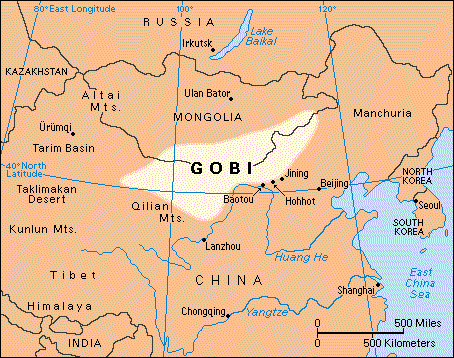
“All these ‘messengers,’” H. P. Blavatsky (Glossary, 287):
“…are to appear before the destruction of the world’, says the one — ‘before the end of Kali Yuga say the others.”
♥
Earth’s Heartbeat
Its origins lie in the very beginnings of life, Blavatsky explains in The Secret Doctrine (SD II: 400), where the heart of Mother Earth beats
“…under the foot of the sacred Shambalah, which then (in the beginnings) was not yet born.”
š
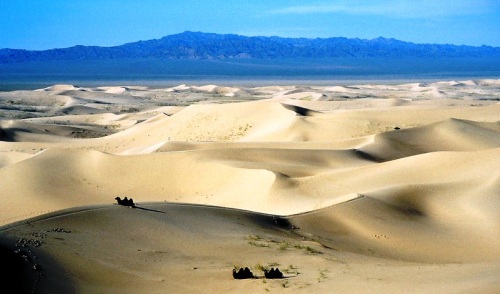
The Sacred Island
She also tells us, in The Secret Doctrine (SD II 319), that the continent of Lemuria’s elect had “taken shelter on the sacred Island…in the [current] Gobi Desert….”
And Master K.H. reveals (Mahatma Letters, 155) that the inhabitants of Shambhala, “when yet an island in the Central Asian Sea,” were called the “Sons of the Fiery Mist” who triumphed over
“…the selfish but not entirely wicked magicians of Poseidonis….”

Manjuśrīkīrti, King of Shambhala
“Read in this connection,” the Mahatma K.H. suggests, “the incomplete and partially veiled tradition, in Isis, Volume I, p. 588-94.”
A Scientific View
I’ve always wondered about the island of Shambhala and the notion of an ocean in the Gobi Desert. Is there any geo-scientific evidence for this?
Some years ago, I asked a professor at UCLA’s Department of Earth and Space Sciences this question and he said that the Gobi Desert, which spans areas of China and Mongolia, had indeed been covered by water at one time! So, the legend can be substantiated.
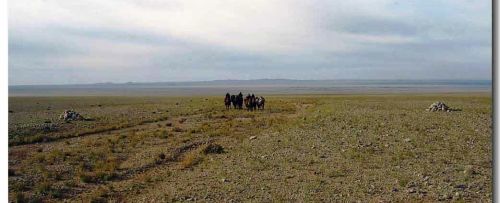
The Gobi Desert
But it would be Nicholas Roerich who would lead a five-year scientific and artistic expedition of Central Asia in 1923 — the first expedition to cross the Tibetan Highlands, north to south, from western China to India.
A noted archaeologist and artist, Roerich was the first to capture the magnificence of the Himalayas — the subject of a number of his 7,000 paintings.
Roerich was also the first Buddhist nominated for the Nobel Peace Prize.
Ω
Roerich:
Darjeeling 1928
“The Messenger”
About the same time William Quan Judge first met Helena Blavatsky in New York City in the fall of 1874, Nicholas Roerich was born in St. Petersburg, Russia. After arriving in the US in 1920,
Nicholas and his wife, Helena, became dedicated Theosophists, and Helena translated The Secret Doctrine into Russian.
∏
Roerich’s Tribute
to Helena Blavatsky
(click for larger view)
Their 15,500-mile journey throughout Asia, taking their sons with them, was an extraordinary and dangerous adventure involving, for example, the crossing of 35 mountain passes from 14,000 to 21,000 feet in elevation.

Roerich at Kulu Lahul 1931-32
“But these were the challenges [Roerich] felt born for,” the Roerich Museum explains on its website:
…”believing that the rigor of the mountains helped a man to find courage and develop strength of spirit.
“And in spite of obstacles, wherever they went the Roerichs’ belief in the essential goodness of life
…and the spirituality of man was reinforced.”
Agni Yoga

Roerich: Sol Offering
Nicholas and Helena Roerich co-founded the Agni Yoga Society, headquartered in New York City. Their sons, Tibetologist George Roerich (a.k.a. Yuri Roerich) and artist and herbalist Svetoslav Roerich blazed new trails of their own.

The Roerich Family
Below, a video collage of a tiny sample of Roerich’s 7,000 paintings, accompanied by Composer Vangelis’ “Cosmos.”
FDR, The Gobi,
and Climate Change
The expedition was funded by the U.S. Department of Agriculture and organized through the help of then Secretary of Agriculture Henry Wallace (later, vice president with FDR), a student of Roerich. One of the purposes was to gather samples of drought-resistant grasses for the Great Plains areas.

Scientists and other specialists at USDA were initially ecstatic about planning the expedition since the Gobi Desert at the time was one of the last unexplored places in the world.
When they found out, however, that a Russian familiar with the Gobi Desert was leading the expedition instead of one of them, they expressed xenophobic resistance in complaining.
š
But it was President Roosevelt himself who proposed the expedition as he believed that trees at one time grew in the Gobi Desert and that when the trees were cut down, the climate changed. If trees could be grown there again, he thought, it would correct the climate.
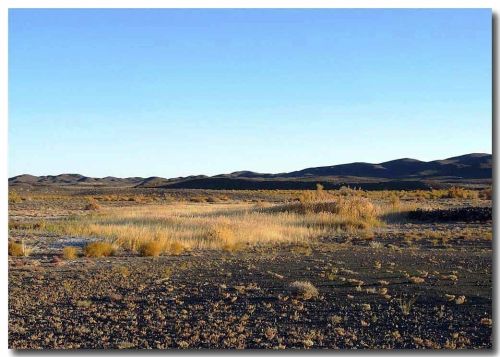
Oasis of Khul Mortiin Us, Roerich’s Dzogo-usu
But for the Roerichs and Wallace, the expedition also meant the possibility of finding Shambhala.
š
Wallace would later be scandalized when he ran for president by an ultra conservative journalist who published some of Wallace’s personal letters to Roerich, dubbing them “The Guru Letters.” What the journalist missed was the secret file President Roosevelt kept of his correspondence with Roerich’s wife, Helena.
Roerich’s Shambhala
Nicholas Roerich chronicled their Asian travels in a number of works, including Altai-Himalaya: A Travel Diary, Heart of Asia, and Shambhala.
“Shambhala itself is the Holy Place, where the earthly world links with the highest states of consciousness,” he explains in Heart of Asia.
“In the East they know that there exists two Shambhalas – an earthly and an invisible one.”
š
“The Greatest and Holiest of Tangla” from Roerich’s Shambhala series:
In their search for Shambhala, the Roerichs travelled to Inner Mongolia. Roerich had been a student of the Mongolian Lama Agwan Dorjeff in the early 1900s and the Roerichs lived in Ulaanbaatar, Mongolia in 1926-1927.
The Roerichs’ oldest son, George (1902-1960), was an accomplished scholar in Tibetan studies. One of his many great contributions was the translation of a 15th century Tibetan Buddhist text called The Blue Annals — almost 1,300 pages in length.
Roerich Mongolia Museum Opening Celebrations
When his oldest living student, Mongolian Professor Shagdaryn Bira, was studying an old photo of the Roerichs in front of their home in Ulaanbaatar, he determined to find it and he did. Professor Bira and a group of supporters saved the house from demolition, restored it, and dedicated it as a museum and art gallery this past summer.
Another Tibetan scholar and practitioner Glenn Mullin (aka Lama Glenn), a Canadian who now resides in Mongolia, is promoting the museum project and a symbolic shrine and temple to Shambhala. Sometimes Lama Glenn comes to the Washington, D.C. area for delightful talks and teaching.
Below a short video of Part 1 of a meeting organised by Glenn Mullin with Telo Tulku Rinpoche in the restored Roerich Museum (Ulan Bator, Mongolia. July 2009.)
Rhythm of Shambhala

Nicholas and Helena Roerich
“Trace how the word Shambhala is uttered in the East. Try to penetrate, even in a small way, into the ideology of this concept. Try to understand the rhythm of structure of speech about Shambhala, and you will perceive a great reality which causes the harp-strings of humanity to vibrate. Let reason help you to ponder on the values accumulated by the best strivings.”
_____________________________
By Kara LeBeau
© Kara LeBeau 2009 All rights reserved
To learn more and watch videos, visit
Roerich Mongolia.
Illustrations by Roerich
Other Links:
(1) Nicholas Roerich Museum, New York City
(2) Nicholas Roerich Paintings – His Country
From a Series of paintings by the same name plus some extras by the Russian artist Nicholas Roerich (1874-1947) with music played on Tibetan Singing Bowls, plus (around halfway through)Gongs and Cymbals by Frank Perry.
(3) Paintings: Nicholas Roerich (1874-1947)
(from Nicholas Roerich Museum in New York and Latvian Roerich Society).
Music: Alberto Grollo ”Anahata” and ”Adjna” from the album ”Chakra Healing Energies”
(4) Secrets of Shambhala
Inspired by and featuring the Artwork of Nicholas Roerich, a true artist
(5) Nicholas Roerich


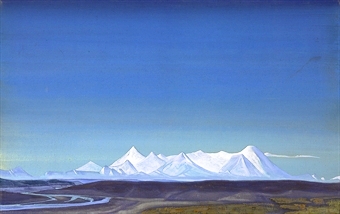

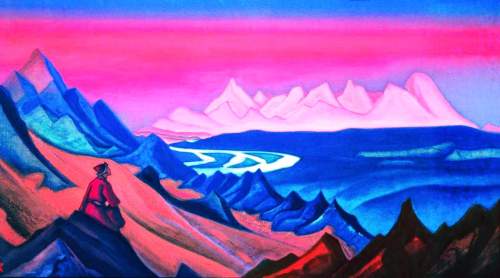




Pingback: Russia-EU Unite Against America As Trump Becomes Prisoner Of Mass Hysteria | The Impious Digest
Pingback: Anne`s News
Pingback: Sorcha Faal 26/07/2017: Rusia-UE se unen contra América (por ley de guerra contra Rusia) como Trump se vuelve prisionero de la histeria en masa
Did the Roerichs ever find Shambhala?
Is Hunzaland the Shambhala that they were looking for?
LikeLike
No, I don’t believe Roerich’s every found the real Shambhala, and Hunza in Pakistan mountans is not Shambhala IMHO. Below are a number of references to help you do research and make your own decisions:
Shambhala and Agharta
http://davidpratt.info/inner4.htm#s2
In Search of Shambhala
http://www.bibliotecapleyades.net/sociopolitica/sociopol_shambahla06.htm
Roerich: “Shambhala, the Resplendent”
http://www.roerich.org/roerich-writings-shambhala.php
Hunza could have been the model for James Hilton’s Shangri-La.
http://hunza-people.blogspot.com/2009/07/history-of-hunza.html
LikeLike